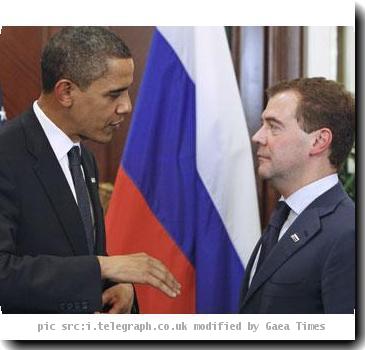Feds OK ‘historic’ deal to tap Utah gas field with directional drilling that avoids wild areas
By Paul Foy, APThursday, July 29, 2010
Feds OK project to drill under, not on, wild areas
SALT LAKE CITY — An energy company received federal approval Thursday to take natural gas from a largely untouched, picturesque region of Utah by agreeing to use new technology to drill under wild areas instead of on top of them.
The Bureau of Land Management’s approval of Bill Barrett Corp.’s multi-billion-dollar project reflects a deal the drilling company made with environmental groups to pull back from wild areas and limit well pads off the high rim of the Green River’s Desolation Canyon.
That canyon, a National Historic Landmark inside one of the Lower 48’s largest roadless areas, has seen little change since explorer John Wesley Powell remarked on “a region of wildest desolation” while boating the river in 1896. The area is populated by elk, deer and bighorn sheep, and bear maulings of river runners are not uncommon.
Along the river’s western ramparts, Bill Barrett plans to use 120 well pads instead of the 538 it originally proposed, and it will drill directionally instead of straight down to get at the gas pockets in one of Utah’s biggest natural gas fields. It also plans to drill fewer wells than planned — 626 instead of 807 — and hide them into folds of the landscape.
Development activity will be limited during summer so rafters on the Green River can’t spy the company’s trucks or rigs from thousands of feet below.
“We think it’s one of the most environmentally progressive natural gas projects,” said Duane Zavadil, a vice president for Bill Barrett Corp.
Shares of the Denver-based company climbed $2.80, or 8.7 percent, to $34.91 on Thursday.
Bill Barrett’s operations in the region called the West Tavaputs Plateau will span 28 square miles. That footprint shrunk from 83 square miles as originally conceived, according to government figures confirmed by the company.
The amount of land that will be disturbed for roads and drilling equipment was cut by more than half, to 1,600 acres, or 2½ square miles.
The company’s presence on land will come close to some proposed wilderness borders, then stop. But it can drill laterally, sight unseen, for nearly a mile — a reach that could lengthen as drilling technology improves, Zavadil said.
Interior Secretary Ken Salazar hailed the company’s compromise and called the agreement historic.
“It clearly provides for the orderly and balanced development of our nation’s energy supply while, at the same time, serving as an outstanding example of the fresh look of how we can better manage our energy resources,” Salazar said in a written statement.
Bill Barrett dropped plans to develop wells around Jack Canyon, a tributary to the Green River, where the steep, rugged terrain is dotted with dense pinion and juniper trees and visited by a herd of wild horses. Jack Canyon is a candidate for wilderness protection, but because it has a well head that was drilled years ago, it was considered fair game for more development.
Now, Jack Canyon will be left untouched.
The company also agreed to pull proposed wells off a bench overlooking artifact-rich Nine Mile Canyon, sometimes called the world’s longest art gallery with thousands of prehistoric rock drawings. The 78-mile canyon holds a year-round stream that drains the highlands. No drilling is planned inside the canyon.
Utah BLM director Juan Palma said the settlement came after years of environmental review and negotiation. The agency issued a final environmental study Thursday along with a decision to approve the project.
“This is a wonderful example of finding balance,” Palma told The Associated Press. “It’s the kind of collaboration we need. It is not the environment against the economy. It’s the environment and economy working together.”
The Southern Utah Wilderness Alliance agreed not to challenge the agency’s approval in federal court after the company stepped back from lands the group is proposing for wilderness designation by Congress.
Steve Bloch, a staff lawyer for the wilderness group, said the lands were as dramatic as Arizona’s Grand Canyon.
“It’s a remarkable, awe-inspiring landscape,” Bloch said. “The compromise was hard fought, but we’re pleased we found a partner in Bill Barrett Corp. to protect this special place.”
Over 20 years or more, the company expects to wring 1 trillion cubic feet of gas from depths of about 8,000 feet and feed it into a national pipeline network.
That would provide 16 days of national supply, a significant amount for a gas field, said Jonathan Cogan, a spokesman for the U.S. Energy Information Administration. The U.S. has proven gas reserves of 245 trillion cubic feet.
In a rare compliment, some of Utah’s elected leaders seized the opportunity to hail President Barack Obama’s administration for moving energy development forward.
Salazar provoked anger in Utah by canceling 77 oil and gas leases auctioned in the final month of the Bush administration, saying they were too close to national parks or wild areas. Bill Barrett Corp., among other bidders refunded money, lost nine parcels on the West Tavaputs Plateau.
“We’d be interested if they were offered again,” Zavadil said. “We would develop them the same way we have proposed for the lands we are developing.”
Utah Gov. Gary Herbert called the government’s approval for Bill Barrett’s project a model for collaboration that could encourage more drilling.
“Oil and gas production is critical to our energy future in Utah, but it must not happen in a way that threatens precious natural resources,” Herbert said in a statement. “Energy production and environmental stewardship can coexist.”
Tags: Animals, Barack Obama, Canyons, Energy, Energy And The Environment, North America, Salt Lake City, United States, Utah

